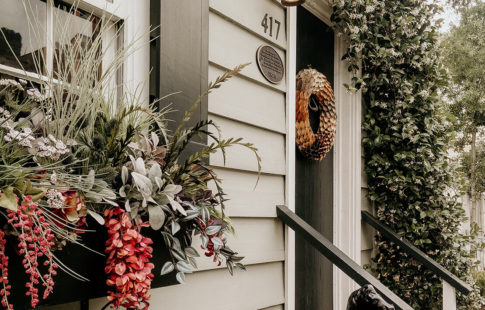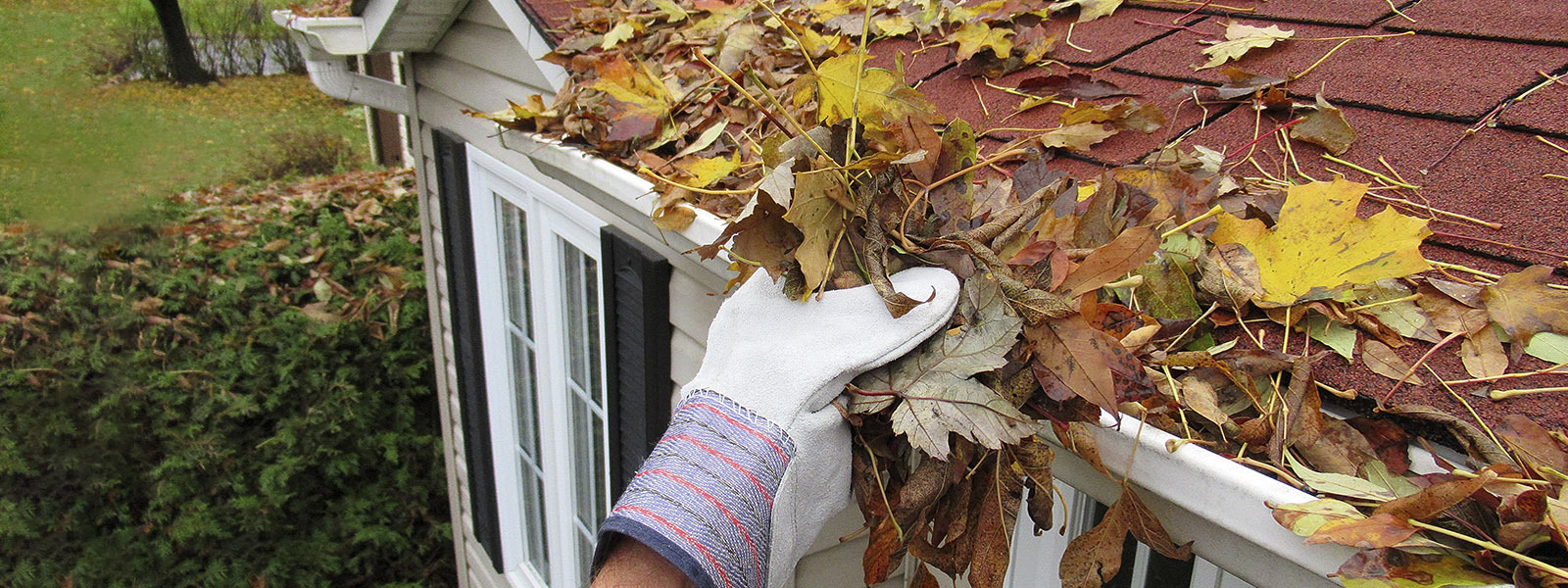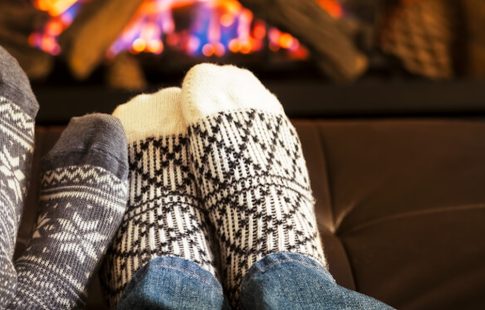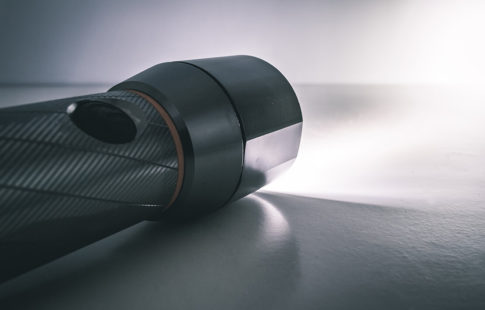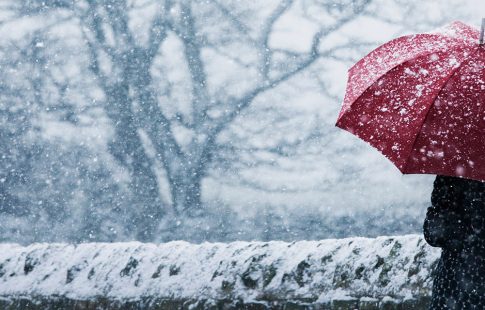Estimated reading time: 5 minutes
Winter weather can be tough on your home but taking time this fall to properly prepare for the cooler months can save you time, and hassle, in the long run. Here’s a 10-step winter home checklist to help get your home ready.
1. Clean gutters
Give your gutters and downspouts a good cleaning to remove leaves and debris that may have fallen in. When not properly maintained, clogged gutters can damage siding, paint, foundations, and more. They can also cause ice dams to form, which can make water drain into your roof, walls, and ceilings.
2. Seal air leaks
A key item for a winter home checklist is keeping cold air out. It can make its way into your house everywhere from doors to electrical outlets, switch plates, and baseboards. It can also cost you money, but proper air seals and insulation can reduce heating and cooling expenses by an average of 15%, according to data cited by ENERGY STAR®. To detect the leaks, you can have a professional home energy audit done or try these DIY inspection tips. ENERGY STAR also offers quick clues on areas to investigate for bad seals, including:
- Cold floors: Your basement or crawlspace may need insulation.
- Temperature changes from room to room: Check duct seals, insulation.
- Drafts and insects in rooms: Check windows, doors, and walls.
- Light coming in from cracks: See if light from a heated space is shining into an unheated space, like an attic or outdoors.
3. Cover drafty windows
Windows can lose up to 30% of your home’s heated or cooled air according to the Department of Energy (DOE). The DOE provides a few tips on how to spot a drafty window, like seeing if you can “rattle” it—that’s a sign air can get in. They also suggest closing a window on a dollar bill. If the bill slips out without “dragging,” they say energy is being lost. Low-cost solutions that can help include weather stripping, snug drapes, and installing plastic shrink film over a window.
4. Have the roof inspected
Check your roof to be sure it’s ready for rain, snow, and melting ice. You can start with a visual inspection and then have a professional follow up. Some red flags Family Handyman and BobVila.com say to look for include:
- Misshapen and missing shingles
- Rusted, popped, or stained roofing nails
- Moss (which can indicate your roof is rotting below)
- Damaged plumbing boots and vents
- Damaged, rusted, or loose flashing
- Leftover holes from things like satellite dish installations
- A significant amount of shingle granules in downspouts and gutters
- Water stains on ceilings and walls
- Light coming in through the top of your attic
The National Roofing Contractors Association also says you should ensure your attic is vented and insulated well. This can help prevent more ice dams and save energy year round. An inspection may also reveal if there are pests sneaking into your attic. If you have trees nearby, trimming limbs may keep them out.
5. Winterize outdoor faucets & spigots
Next up on your winter home checklist: preventing water damage from frozen, burst pipes. If you live in an area where winter temperatures drop below freezing, experts recommend draining outdoor faucets or hose bibs. This will help keep your pipes from freezing. For added insulation, you can place a faucet cover over the spigot.
6. Insulate indoor pipes
Pipes in interior spaces may also need insulation, particularly in unheated areas. A few areas to check include pipes in garages, basements, cabinets, and attics. Pipes that sit near outside walls should also be protected. Foam pipe insulation is a popular and quick solution for this job. It slips over pipes and can cost a few dollars or less per pipe.
7. Inspect your furnace
Make sure your furnace is working properly by having it inspected. It’s a chance to catch safety issues or a problem that may leave you in the cold. Check your furnace filter and replace it if needed, too. That should be done monthly or whenever necessary according to the DOE’s tips on heating system maintenance.
8. Have the fireplace inspected
If you plan to use your fireplace, have it professionally inspected to make sure it’s safe for use. In addition to being a house-fire risk, poor maintenance can lead to health threats like carbon monoxide poisoning.
9. Test smoke and carbon monoxide alarms
The number of accidental house fires tends to spike during fall and winter holidays, so it’s a good idea to test your smoke and carbon monoxide (CO) alarms. This should be done regularly. It can also be a smart time to put in fresh batteries if your model requires regular replacements.
For an added layer of protection, check the back of your alarms for their date of manufacture. If they’re too old, they should be replaced altogether. Check with each alarm’s maker for best practices on testing, maintaining, and replacing it. Ready.gov also cautions that smoke alarm units should be replaced “every 10 years or according to manufacturer’s instructions.” That said, each smoke and carbon monoxide detector’s guarantee may be very different.
10. Fix cracks in your driveway
If you’ve been meaning to refresh your driveway, you may need to do that before it’s too cold. That’s because ice can get into cracks and make them expand more, as BobVila.com explains. If you’re planning to seal your entire driveway, experts say you’ll also need temps to stay at a minimum of 50 or, according to Lowe’s, even 60 degrees throughout the process, which may last more than a day. Maintaining those temperatures may be a challenge overnight, especially in the winter.
Bonus tip: Restock winter necessities
A final item for your winter home checklist is making sure you have the essentials for handling ice and snow. You’ll be thanking yourself when you have some sand or salt on hand for an icy walkway. Power outages may also hit in winter, so check out our blog on emergency supplies.
After following these tips, you and your home will hopefully be well-stocked for a warmer, safer, and more energy-efficient winter. Bring on that snow!
Tradenames and trademarks used in this blog post are the property of their respective owners. Nationstar Mortgage LLC d/b/a Mr. Cooper is not affiliated, associated, or sponsored by any of these owners. Use of these names and trademarks is not intended to and does not imply endorsement, but is for identification purposes only. Information provided does not necessarily represent the views of Mr. Cooper. Information is subject to change without notice.


